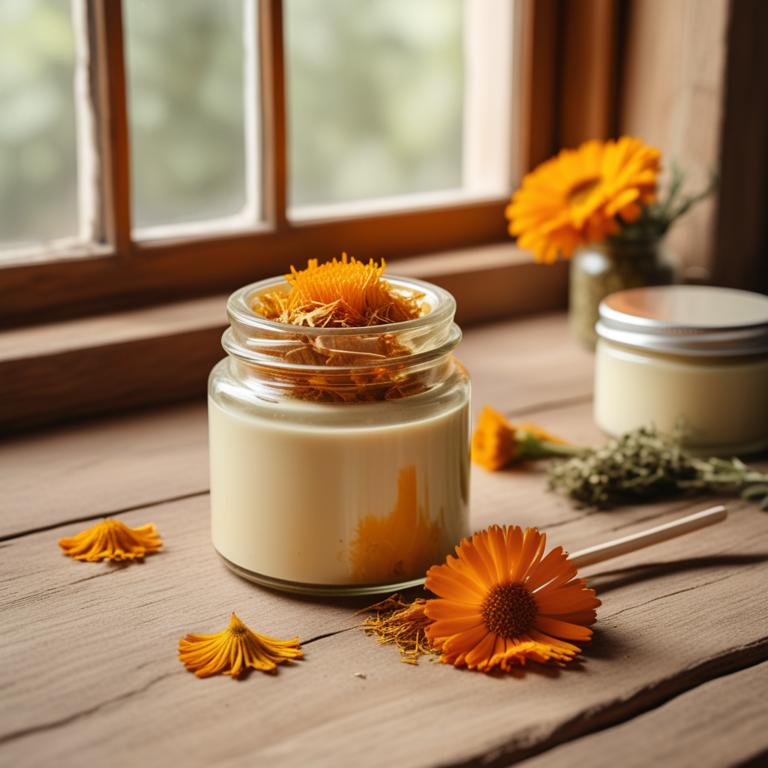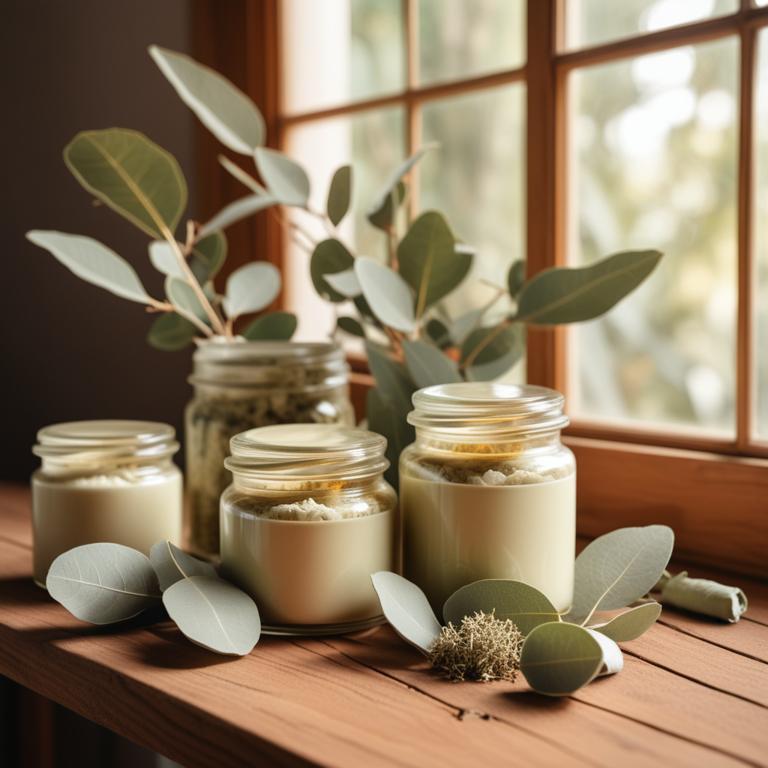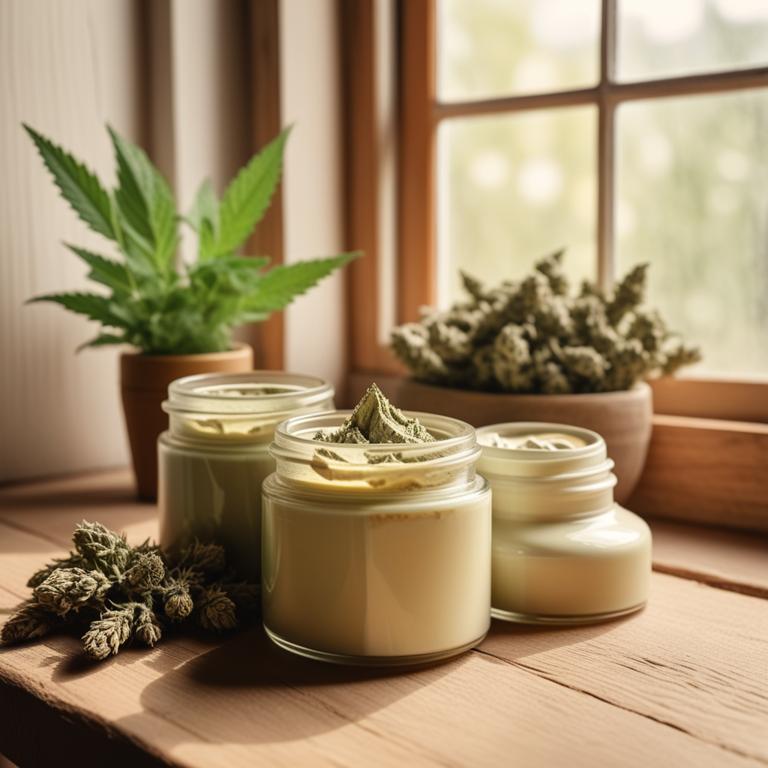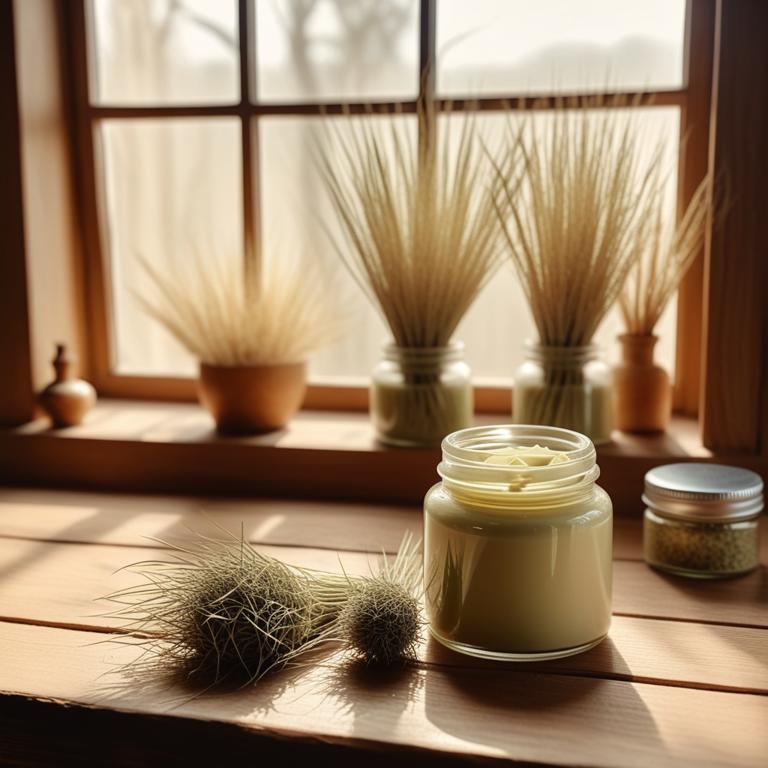9 Best Herbal Creams For Fungal Infection

Herbal creams for fungal infection are topical preparations made from plant-based extracts that are used to treat fungal infections, such as athlete's foot, ringworm, and nail fungus.
These creams have various benefits, including being a natural, non-toxic, and environmentally friendly alternative to conventional treatments, which can be harsh and have unpleasant side effects.
Examples of herbal creams used to treat fungal infections include tea tree oil cream, which has antifungal properties, aloe vera cream, which has anti-inflammatory and soothing properties, and neem cream, which has antiseptic and antifungal properties.
Additionally, other herbal creams like calendula cream, chamomile cream, and licorice root cream are also used to treat fungal infections due to their antifungal, anti-inflammatory, and soothing properties.
According to "Mycoses", creams for fungal infection may benefit from the use of tea tree oil, as it has shown positive outcomes in four randomized clinical trials.
Below there's a list of the 9 best herbal creams for fungal infection.
- 1. Melaleuca alternifolia creams
- 2. Aloe barbadensis creams
- 3. Calendula officinalis creams
- 4. Eucalyptus globulus creams
- 5. Hypericum perforatum creams
- 6. Urtica dioica creams
- 7. Lavandula angustifolia creams
- 8. Eucalyptus camaldulensis creams
- 9. Cymbopogon citratus creams
Also you may be interested in...
TODAY'S FREE BOUNDLE
Herb Drying Checklist + Herbal Tea Shopping List + Medicinal Herbs Flashcards
Enter you best email address below to receive this bundle (3 product valued $19.95) for FREE + exclusive access to The Aphotecary Letter.
$19.95 -> $0.00
1. Melaleuca alternifolia creams

Melaleuca alternifolia creams are a popular herbal preparation used to treat fungal infections, particularly those affecting the skin, such as athlete's foot and ringworm.
The antifungal and antibacterial properties of this cream help to treat the ailment by inhibiting the growth of fungi and bacteria, thereby promoting a healthy environment for the skin to recover.
The bioactive constituents of Melaleuca alternifolia, including cineole, terpinen-4-ol, and limonene, play a crucial role in its antifungal properties, which help to reduce inflammation and prevent the spread of infection.
The benefits of using Melaleuca alternifolia creams to treat fungal infections include reduced symptoms, accelerated healing, and prevention of further infection, making it a highly effective and natural treatment option.
Related Study
According to "Skin pharmacology : the official journal of the Skin Pharmacology Society", Melaleuca alternifolia creams for fungal infection may be effective due to the antifungal activity of tea tree oil, which was found to inhibit the growth of all clinical fungal isolates, including dermatophytes, yeasts, and Malassezia furfur strains.
2. Aloe barbadensis creams

Aloe barbadensis creams, derived from the aloe vera plant, have been traditionally used to treat fungal infections such as athlete's foot and ringworm.
The anti-inflammatory and antifungal properties of aloe vera, including compounds like aloin and aloe-emodin, help to reduce inflammation and prevent the growth of fungal cells, thereby treating the infection.
The bioactive constituents of aloe vera, including vitamins A, C, and E, as well as minerals like zinc and calcium, also contribute to its antifungal and antibacterial properties, making it an effective treatment option.
The benefits of using aloe barbadensis creams to treat fungal infections include reduced inflammation, accelerated healing, and prevention of further infection, making it a popular natural remedy for this common ailment.
Related Study
According to the existing scientific studies, Aloe barbadensis creams may have antifungal effects, providing some support for their potential use in treating fungal infections.
3. Calendula officinalis creams

Calendula officinalis creams have been traditionally used to treat fungal infections, such as athlete's foot and ringworm, due to their antifungal and anti-inflammatory properties.
The bioactive constituents present in Calendula officinalis, including triterpenoids and flavonoids, help to inhibit the growth of fungal pathogens and reduce inflammation, thereby promoting healing and recovery.
These herbal preparations also exhibit antimicrobial properties, which help to prevent the spread of infection and promote a healthy environment for the skin to heal.
The benefits of using Calendula officinalis creams to treat fungal infections include reduced symptoms, improved wound healing, and a lower risk of complications, making it a natural and effective alternative to conventional treatments.
4. Eucalyptus globulus creams

Eucalyptus globulus creams have been used to treat fungal infections, such as athlete's foot and ringworm, due to their antimicrobial and antifungal properties.
The herbal preparation's ability to inhibit the growth of fungi and bacteria helps to treat the infection, reducing symptoms like itching, redness, and discomfort.
The bioactive constituents of Eucalyptus globulus, including eucalyptol and 1,8-cineole, exhibit potent antifungal activity, making it an effective treatment for fungal infections.
Regular use of Eucalyptus globulus creams can provide relief from fungal infections, promoting healthy skin and preventing the spread of infection.
5. Hypericum perforatum creams

Hypericum perforatum creams, derived from the St. John's Wort plant, have been traditionally used to treat fungal infections such as ringworm and athlete's foot.
The antifungal properties of this herbal preparation are attributed to the presence of bioactive constituents like hyperforin and hypericin, which exhibit potent antifungal activity.
These constituents help to inhibit the growth of fungal pathogens, thereby facilitating the recovery of affected skin areas.
The benefits of using Hypericum perforatum creams for fungal infections include their non-toxic nature, ease of application, and the potential to reduce the risk of antibiotic resistance.
Related Study
According to "BMC veterinary research", Hypericum perforatum creams for fungal infection have been shown to have broad-spectrum antifungal effects, making them a promising option for the treatment of dermatophytosis in dogs.
6. Urtica dioica creams

Urtica dioica creams, derived from the leaves of the stinging nettle plant, have been traditionally used to treat fungal infections such as ringworm and athlete's foot.
The antifungal and anti-inflammatory properties of these creams help to soothe and heal infected skin, reducing redness and itching.
Bioactive constituents like flavonoids, phenolic acids, and saponins in Urtica dioica creams play a crucial role in inhibiting fungal growth and modulating the immune response, thereby facilitating the recovery process.
The use of Urtica dioica creams offers numerous benefits, including reduced symptoms, accelerated healing, and prevention of fungal infections, making it a popular natural remedy for skin fungal infections.
Related Study
According to "Folia medica", Urtica dioica creams for fungal infection showed potential antifungal effects, with the hydro-alcoholic extract of U. dioica having the lowest Minimum Inhibitory Concentration (MIC) against Candida albicans, suggesting its possible use in treating fungal infections.
7. Lavandula angustifolia creams

Lavandula angustifolia creams have been traditionally used to treat fungal infections due to their antifungal and anti-inflammatory properties.
The bioactive constituents, including linalool and linalyl acetate, exhibit antimicrobial activity, which helps to combat fungal growth and promote healing.
By reducing inflammation and soothing the affected area, these creams aid in the resolution of symptoms associated with fungal infections, such as itching and redness.
The benefits of using Lavandula angustifolia creams for fungal infections include reduced recovery time, improved wound healing, and a decrease in the risk of infection recurrence.
Related Study
According to "Molecules (Basel, Switzerland)", Lavandula angustifolia creams for fungal infection showed a significant antifungal activity, which is equally effective against fluconazole and caspofungin susceptible and less-susceptible strains, with a 99.9% reduction in fungal growth in 27% of isolates within 30 minutes.
8. Eucalyptus camaldulensis creams

Eucalyptus camaldulensis creams have been traditionally used to treat fungal infections, particularly those caused by dermatophytes, due to their antifungal properties.
The bioactive constituents of Eucalyptus camaldulensis, including flavonoids, phenolic acids, and terpenoids, play a crucial role in inhibiting the growth of fungi and alleviating symptoms such as itching and inflammation.
By creating an environment that is less conducive to fungal growth, these creams help to treat fungal infections, promoting healing and reducing the risk of recurrence.
The benefits of using Eucalyptus camaldulensis creams to treat fungal infections include reduced symptoms, faster healing times, and a reduced risk of complications, making them a popular natural remedy for this common ailment.
9. Cymbopogon citratus creams

Cymbopogon citratus creams, derived from the essential oils of the lemongrass plant, have been traditionally used to treat fungal infections due to their antimicrobial and antifungal properties.
The bioactive constituents of Cymbopogon citratus, including citral, geraniol, and limonene, help to inhibit the growth of fungal pathogens, thereby reducing the severity of the infection.
The cream's antifungal activity helps to combat fungal infections by disrupting the cell membranes of the fungal cells, ultimately leading to their death.
The benefits of using Cymbopogon citratus creams to treat fungal infections include reduced risk of antibiotic resistance, fewer side effects, and enhanced patient compliance, making it a promising natural alternative for the management of fungal infections.
Related Study
According to "Comptes rendus biologies", Cymbopogon citratus creams have been shown to possess significant antifungal activity, particularly in the treatment of grey mould on tomato fruit, with the aqueous extract proving most effective against B. cinerea in vivo.